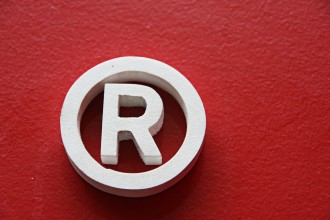
November 27, 2018
What’s in a Surname? The Fight for the SCHLAFLY Brand
In news close to home, SCHLAFLY branded beer will remain available to holiday revelers.
On November 27, the Federal Circuit affirmed the Trademark Trial and Appeal Board’s decision to register The Saint Louis Brewery’s SCHLAFLY trademark. In doing so, the Federal Circuit dismissed arguments brought by the late Phyllis Schlafly and her son Dr. Bruce Schlafly that the mark was “primarily a surname” and, therefore, ineligible for registration pursuant to 15 U.S.C. 1052(e)(4)
Phyllis Schlafly was a nationally-known activist and self-proclaimed “conservative icon.” Ms. Schlafly alleged that the public associates the term “Schlafly” with “[Ms.] Schlafly and the traditional values that she represented” as a result of her years of activism. According to her, The Saint Louis Brewery’s registration of SCHLAFLY would impermissibly link her name with the sale and consumption of beer. Dr. Schlafly contended that registration of SCHLAFLY for beer would result in the term having “[a] negative connotation due to complications with . . . [d]runk driving [and] intoxication leading to injuries” — an association that a physician would like to avoid.
The Board side-stepped Opposers’ surname arguments, noting that even if “Schlafly” is a surname, The Saint Louis Brewery provided sufficient evidence that the term has acquired distinctiveness under 15 U.S.C. 1052(f). Specifically, the Board noted evidence of longstanding use, marketing expenditures, volume of sales, awards, and media reports surrounding SCHLALFY branded beer products. The Board succinctly concluded “[t]o be blunt, this was not a ‘close call.’”
Opposers appealed, arguing that the evidence was insufficient to support an acquired distinctiveness. According to Opposers, a showing of acquired distinctiveness required survey evidence showing secondary meaning. Opposers urged the Federal Circuit to adopt a new “change in significance” test for acquired distinctiveness of a surname — that “a surname cannot be registered as a trademark without showing a change in significance to the public, from a surname to an identifying mark for specified goods.”
The Federal Circuit determined that nothing in the Lanham Act prohibits registrations of a surname as a matter of course. In fact, Section 2(f) expressly permits registrations of a surname that has acquired distinctiveness. The Federal Circuit noted that acquired distinctiveness can be shown based on a wide variety of evidence, including direct and circumstantial evidence.
By way of example, the Court noted that the applicable federal regulations provide three categories of evidence that can be used to establish secondary meaning: prior registrations, 5 years of substantially continuous and exclusive use, and “other evidence.” Appropriate “other evidence” includes, but is not limited to, “verified statements, depositions or other appropriate evidence showing duration, extent, and nature of the use in commerce and advertising expenditures in connection therewith . . . and verified statements, letters or statements from the trade or public, or both, or other appropriate evidence of distinctiveness.”
Based on the expansive nature of evidence that can demonstrate acquired distinctiveness, the Federal Circuit refused to require survey evidence as a prerequisite to a showing of acquired distinctiveness.
Finally, as another welcomed nod to TTAB practitioners, the Federal Circuit rejected Opposers’ Due Process violation argument noting that Opposers availed themselves of the trademark opposition procedure which is an “appropriate process of law.”
The lesson to learn: for business owners using a family name, it may take years of business efforts and diligent branding to acquire distinctiveness in a family name, but it can be done with diligent record keeping.
And in the spirit of holiday gatherings, it is worth noting that Phyllis Schafly, Bruce Schafly and their attorney Andrew Schlafly are relatives of Thomas Schafly, a co-founder of the Saint Louis Brewery. Those holiday gatherings will likely be as frosty as a bottle of SCHLAFLY beer.


































